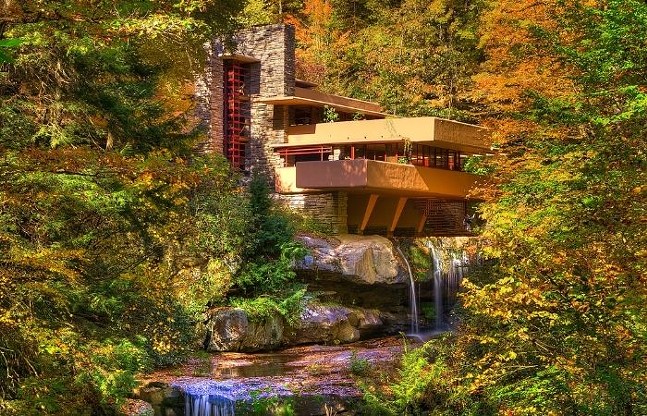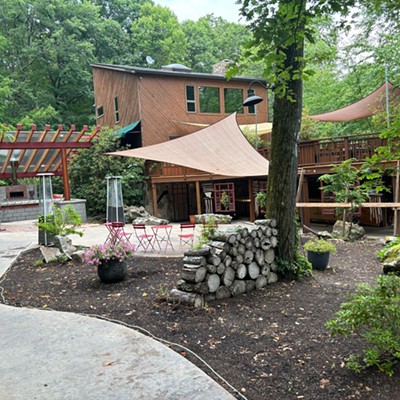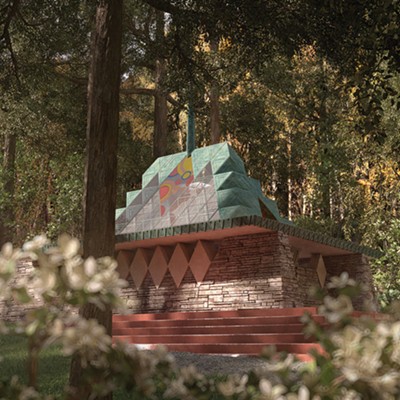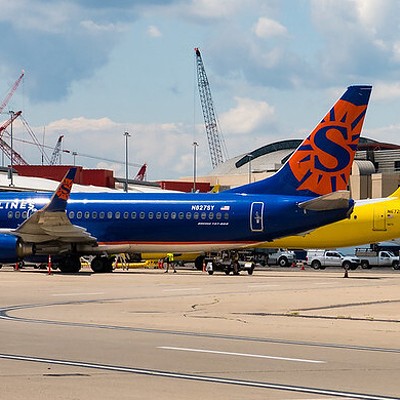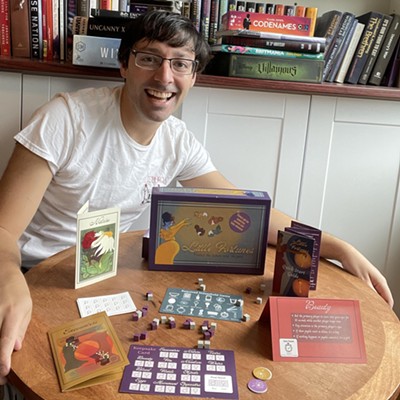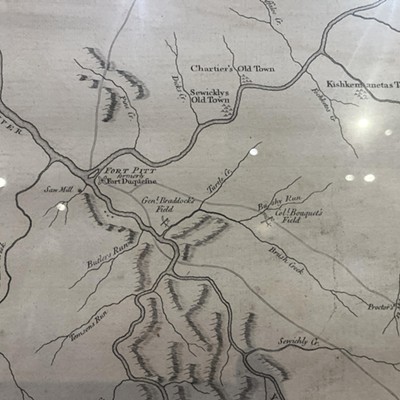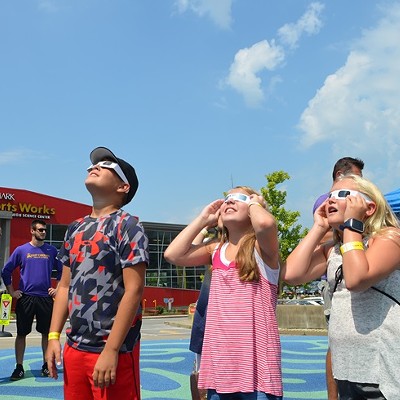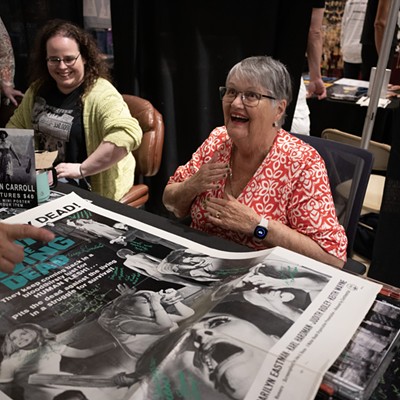New road trip tours 9 Frank Lloyd Wright structures across Western Pa. and N.Y.
[
{
"name": "Local Action Unit",
"component": "24929589",
"insertPoint": "3",
"requiredCountToDisplay": "1"
}
]
Frank Lloyd Wright might be most well known for his architectural work at Fallingwater in Fayette County, but he designed more than 1,000 structures over the span of his illustrious career. More than 500 of those designs came to fruition, and the Great Wright Road Trip makes it easy to visit nine of those sites across Western Pennsylvania and New York.
The Great Wright Road Trip, organized by the nine Wright sites, begins in the Laurel Highlands and ends in Buffalo, New York. It gives people a taste of Wright’s work in the Prairie Style of the early 1900s, which pays homage to the environment in its design, as well as his development of organic architecture, which finds harmony between humanity and the environment.
“This road trip will change the way you see the world, inspiring you to think differently about how you live with art and nature,” says Justin Gunther, director of Fallingwater and vice president of the Western Pennsylvania Conservancy. “As you travel between these architectural landmarks, which are regarded as some of Frank Lloyd Wright’s greatest works, you’ll explore the richness and breadth of the architect’s work and gain an appreciation for the beautiful landscapes that inspired his designs.”
The Laurel Highlands is home to several Wright structures, including the Duncan House and Mäntylä at Polymath Park, which are open to reservation for those who want to stay a night before embarking on the road trip.
From there, the map takes people to Fallingwater, which famously straddles a waterfall is now on the UNESCO World Heritage List and offers two tours based on interest level. The trip map then dips just a few miles south to visit Kentuck Knob, known for its “Usonian” style, which Wright coined to describe the landscape of the U.S. and often features native materials, natural heating and cooling, and natural lighting.
The road trip route moves north from there, with a stop in Polymath Park, a 125-acre park where people can visit the Duncan House and Mäntylä if they have not already. Polymath Park is also home to two structures designed by Wright apprentice Peter Berndtson, the Balter House and Blum House.
Afterwards, travelers continue up to Erie to view a reconstruction of Wright’s original San Francisco office at the Erie County Historical Society-Hagen History Center, before heading northeast to Buffalo to explore the final five Wright sites on the tour, starting with the Martin House, which Wright referred to as a “domestic symphony” and a “well-nigh perfect composition.”
Wright site six takes an industrial turn with the Filling Station at the Buffalo Transportation Pierce-Arrow Museum, where visitors can also take in the collection of Pierce-Arrow motor cars that were manufactured in Buffalo until 1938.
The seventh Wright site is the Blue Sky Mausoleum at Forest Lawn Cemetery in Buffalo, which was commissioned in 1928 but only built in 2004 after the commissioning family lost their money during the Great Depression. Wright site eight returns to transportation with the Fontana Rowing Boathouse at Buffalo’s West Side Rowing Club, which overlooks the Black Rock Canal and Niagara River.
The final stop on the tour returns to the Martin family at Isabelle Martin's Summer Place, a property that overlooks Lake Erie and incorporates design elements that Wright would continue to develop at Fallingwater. The road trip site includes suggestions for lodging and lunch along the way, as well as “Frank Facts” for several sites.
While the trip map notes that the journey can take as few as two or three days, it also encourages travelers to take their time and explore the regions along the way, including at The Frick in Pittsburgh. The Pittsburgh History and Landmarks Foundation also receives a shoutout for its tours.
“The traveling public is looking for new opportunities to get in their cars and explore,” executive director of Graycliff Anna Kaplan says. “We think this is the perfect time to collaborate with our colleagues and let potential visitors know what a special experience our neighboring regions have to offer for lovers of Frank Lloyd Wright and American architecture.”
The Great Wright Road Trip, organized by the nine Wright sites, begins in the Laurel Highlands and ends in Buffalo, New York. It gives people a taste of Wright’s work in the Prairie Style of the early 1900s, which pays homage to the environment in its design, as well as his development of organic architecture, which finds harmony between humanity and the environment.
“This road trip will change the way you see the world, inspiring you to think differently about how you live with art and nature,” says Justin Gunther, director of Fallingwater and vice president of the Western Pennsylvania Conservancy. “As you travel between these architectural landmarks, which are regarded as some of Frank Lloyd Wright’s greatest works, you’ll explore the richness and breadth of the architect’s work and gain an appreciation for the beautiful landscapes that inspired his designs.”
The Laurel Highlands is home to several Wright structures, including the Duncan House and Mäntylä at Polymath Park, which are open to reservation for those who want to stay a night before embarking on the road trip.
From there, the map takes people to Fallingwater, which famously straddles a waterfall is now on the UNESCO World Heritage List and offers two tours based on interest level. The trip map then dips just a few miles south to visit Kentuck Knob, known for its “Usonian” style, which Wright coined to describe the landscape of the U.S. and often features native materials, natural heating and cooling, and natural lighting.
The road trip route moves north from there, with a stop in Polymath Park, a 125-acre park where people can visit the Duncan House and Mäntylä if they have not already. Polymath Park is also home to two structures designed by Wright apprentice Peter Berndtson, the Balter House and Blum House.
Afterwards, travelers continue up to Erie to view a reconstruction of Wright’s original San Francisco office at the Erie County Historical Society-Hagen History Center, before heading northeast to Buffalo to explore the final five Wright sites on the tour, starting with the Martin House, which Wright referred to as a “domestic symphony” and a “well-nigh perfect composition.”
Wright site six takes an industrial turn with the Filling Station at the Buffalo Transportation Pierce-Arrow Museum, where visitors can also take in the collection of Pierce-Arrow motor cars that were manufactured in Buffalo until 1938.
The seventh Wright site is the Blue Sky Mausoleum at Forest Lawn Cemetery in Buffalo, which was commissioned in 1928 but only built in 2004 after the commissioning family lost their money during the Great Depression. Wright site eight returns to transportation with the Fontana Rowing Boathouse at Buffalo’s West Side Rowing Club, which overlooks the Black Rock Canal and Niagara River.
The final stop on the tour returns to the Martin family at Isabelle Martin's Summer Place, a property that overlooks Lake Erie and incorporates design elements that Wright would continue to develop at Fallingwater. The road trip site includes suggestions for lodging and lunch along the way, as well as “Frank Facts” for several sites.
While the trip map notes that the journey can take as few as two or three days, it also encourages travelers to take their time and explore the regions along the way, including at The Frick in Pittsburgh. The Pittsburgh History and Landmarks Foundation also receives a shoutout for its tours.
“The traveling public is looking for new opportunities to get in their cars and explore,” executive director of Graycliff Anna Kaplan says. “We think this is the perfect time to collaborate with our colleagues and let potential visitors know what a special experience our neighboring regions have to offer for lovers of Frank Lloyd Wright and American architecture.”

